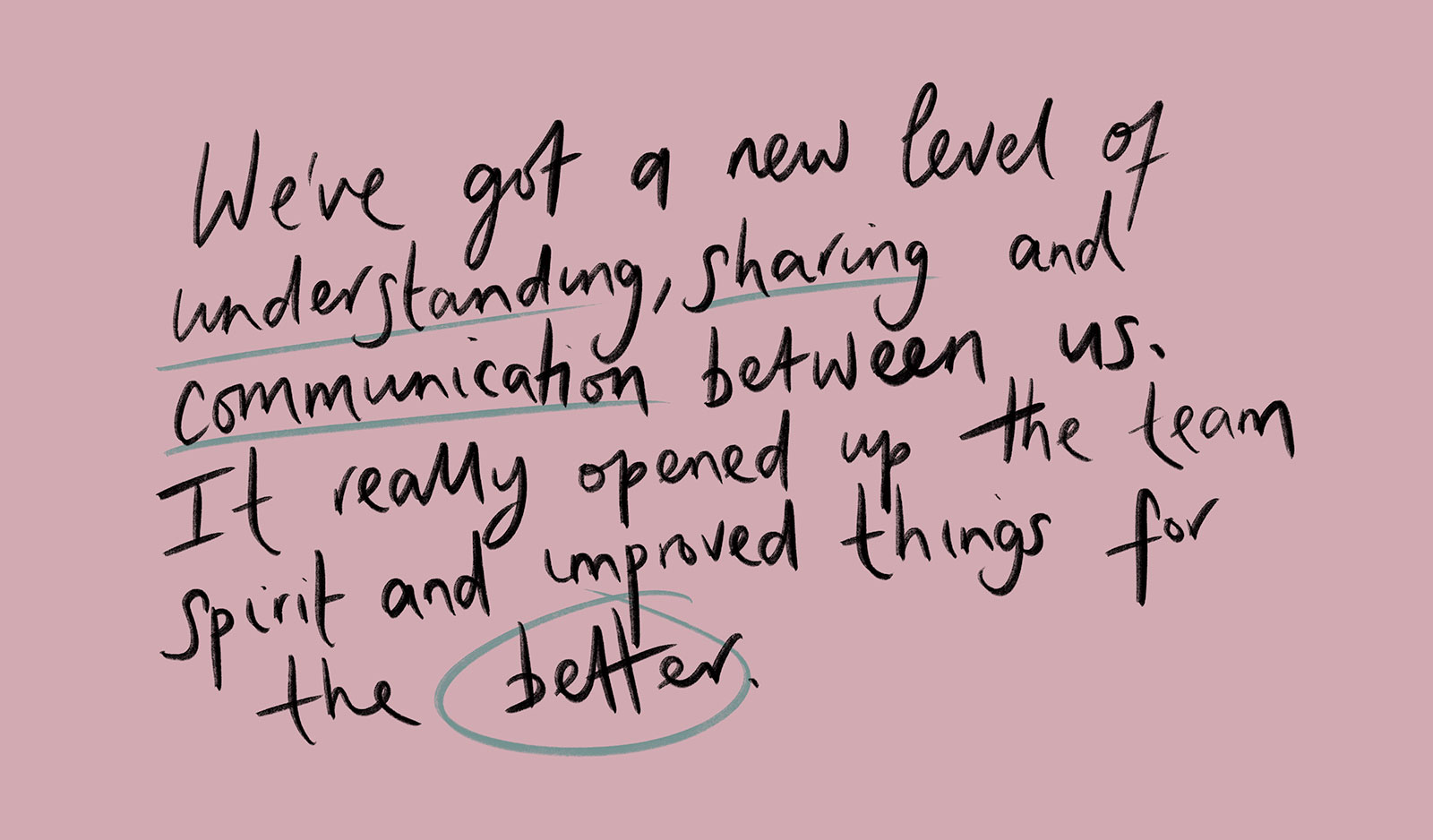When you’re leading a strategic programme of change it’s a lot of work. You’ll need the energy, expertise and commitment of your team.
In this blog I explain the neuroscience behind people’s behaviour at work, and three tips to start building a high trust environment where people and projects can succeed.
I’m sure you already know some of the research on this.
Change projects fail because of a lack of engagement, failure to embrace change, poor ways of working and poor communication.
It’s people that deliver the change or derail it
So what determines whether your people will deliver or derail your project?
Well, after twenty years’ delivery experience and six years helping clients develop teams, I am certain it’s not the tech you choose, nor is it having the ‘right’ people.
These factors are important, but underpinning everything is: how your people work together, how much they trust you and each other.
The success of your change programme largely depends on levels of fear and trust within your organisation
A successful IT project makes a positive impact on your organisation, it changes things for the better. Change brings with it uncertainty, change takes extra effort and adds extra risk. In the face of change, ancient parts of our brain whose main function is to keep us alive get triggered. Our stress responses are activated and our IQ drops – in the face of a threat, chemicals in our brains stop us accessing our higher cognitive functions. This helped us to run away from that tiger on the savannah; it’s not as handy in the office.
The problem is during the delivery of IT projects you’ll need your people at their best. Problems will need solving, things will go wrong and it will get stressful. If you are to realise your ambitions, you’ll need people to be creative, resilient and prepared to put in the extra effort.
Your people will not be at their best unless they feel psychologically safe and trust each other
So how do you do it?
Well I can’t tell you what’s right for your organisation. But I will ask two questions:
- To deliver your ambitions do you need people to be resilient, adaptable and to work together to solve complex problems?
- Do you think you can demand that people trust you?
I can help those who answer yes to question one and no to question two.
The first step is to understand that you can’t tell people what to think or how to feel
We need to encourage the behaviours we need, without being directive.
The team at Northern Value Creators and I have spent the past six years developing methods of achieving this.
Here are three canny pointers to start the process of building high trust in your teams.
1: Build a picture of fear and trust in your organisation
Levels of fear and trust will have a huge impact on the success of your project, so you need to know where you are starting from. We’ve developed our Capacity for Change service that creates a unique picture of your organisation, but you can start by simply talking to people.
Start a conversation with people about how they feel. This might be uncomfortable for you and them at first, especially if this is very different to how you normally act. Practice with people you already share high trust with and remember to never judge or act on any instant need to defend yourself or the company – no matter what they say. This is time for you to listen, ask questions and respect whatever is said.
2: Model the behaviours you want to see in others
Ever heard the saying: ‘children will copy what you do, not what you tell them to do’? It’s the same at work. Your people need their leaders to show the way. You and your management teams need to lead and work in ways that build trust. So the best place to start is with yourself. Do you have a growth mindset, or are you scared of failure? Are you comfortable with not knowing? Do you ask more than tell? Are you ever vulnerable in front of others?
3: Raise awareness of how we naturally react to change and uncertainty
Learning a little neuroscience is really helpful in getting to grips with how people react to change and how we can work with our brain chemistry to build trust. With just a little knowledge we see teams opening up with each other, using a new shared language to talk about their reactions like never before. A great place to start is Dr Dan Siegal’s hand model of the brain.
If you can try some of these activities, or simply start thinking more about levels of trust in your organisation you will have begun the process of developing a culture and way of working that can deliver anything.
Imagine what you could achieve if your people transform the way they work together.
If you can try some of these activities, or simply start thinking more about levels of trust in your organisation you will have begun the process of developing a culture and way of working that can deliver anything.
Imagine what you could achieve if your people transform the way they work together.
Discover your people’s capacity for change
If your people are central to the success of your strategy, it’s the people piece that will deliver the change, or derail it.
Don’t just hope your people will get behind your plans
Nor, rely on them simply doing as they are told
Understand your people’s current capacity for change and use those insights to keep them engaged during your change initiative.


